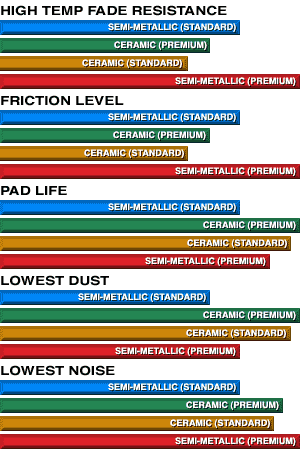Just remember that if you are going from conventional "semi metallic" brake pads to modern ceramic brake pads, you will experience "at least" some reduction in braking power. And possibly 1/2 the braking power if you go from a high end OEM semi metallic to a cheap ceramic.
Or, put another way, your brake pedal will require more pressure.
People are often under the impression that ceramic pads stop as powerfully as quality semi metallics. With very few exceptions such as Carbotech ceramic based racing pads (which dust and squeal like crazy) everyday ceramics create lower braking torque.
On today's vehicles, this is often not a problem, as the brake systems are quite capable. But, if you have pickup truck, such as an older F150 with marginal brakes, and you tow... Choose a high end semi metallic. Otherwise you and your boat are going to be sailing through the red lights with both feet on the brakes.
From brakeperformance.com:

Or, put another way, your brake pedal will require more pressure.
People are often under the impression that ceramic pads stop as powerfully as quality semi metallics. With very few exceptions such as Carbotech ceramic based racing pads (which dust and squeal like crazy) everyday ceramics create lower braking torque.
On today's vehicles, this is often not a problem, as the brake systems are quite capable. But, if you have pickup truck, such as an older F150 with marginal brakes, and you tow... Choose a high end semi metallic. Otherwise you and your boat are going to be sailing through the red lights with both feet on the brakes.
From brakeperformance.com:

Last edited:

